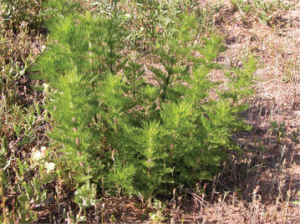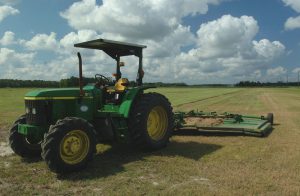There are several factors that determine our success using herbicides on pasture. The herbicides, themselves, are highly effective and highly researched. We often think of weather conditions, like the chance of rain or wind conditions, when thinking about herbicide success factors. While those are very important, there are several more factors that we need to consider. Herbicide failure is often due to applicator error.
1. Weed Identification

First, we must properly identify the weed(s) we are trying to control. Improper identification leads to the incorrect herbicide selection. If you are unsure what pasture weed you are dealing with, you can send pictures to your county’s agricultural agent. We have many resources to help get your weed identified.
2. Status of the Weed
Second, the “health status” of the weed itself needs to be ideal for proper uptake of the herbicide and for our success of killing it. In general, weeds should be immature/tender and not stressed. One of the biggest stressors is drought. The next few months, during our spring drought period, may not be ideal for herbicide control because lack of rain causes plants to become dormant-like, slowing translocation through the plant. Dormancy due to cold weather can create a similar response in the plant, as well.
3. Water and Surfactant
Use quality water and a surfactant. When mixing your herbicide, your water quality can be an enemy of your herbicide. Municipal water tends to be alkaline and can quickly render herbicide ineffective. Hardness in well water can also be an issue. Using the tank of herbicide mixture quickly (use within the day it is mixed) is a best management practice. Surfactants enhance the ability of the herbicide to enter the plant by breaking the surface tension of the droplets when sprayed on the plants. This is an inexpensive addition to your spray mix; read the herbicide label to select the correct surfactant.
4. Sprayer Calibration
Sprayer calibration is a necessary step for having herbicide success. When herbicide application rates are given, it is usually listed as “# of pints per acre”. Having too much herbicide applied can be as detrimental as having too little herbicide applied. “More” is not better because it is expensive and can cause damage to non-targeted plants, including your pasture grass.

There are instructions available (even for backpack applications) to help guide you in the calibration process. Sprayer Calibration
Finally, to bring it all together, reading the herbicide label is imperative. The research that has been done by the herbicide companies is put on that label to insure your success. An excellent resource to have on hand is Weed Management in Pastures This provides a list of common weeds in Florida and compares the success of many pasture herbicides available to us. While total elimination of weeds is not likely, management of them to gain back some of our pasture should be our goal.
 0
0
